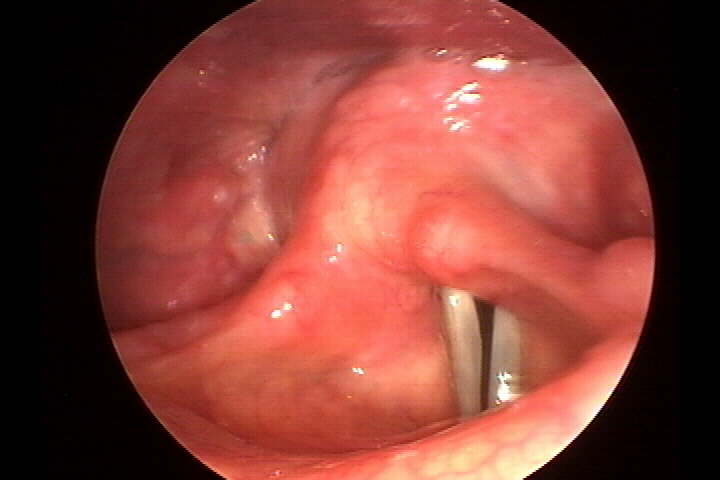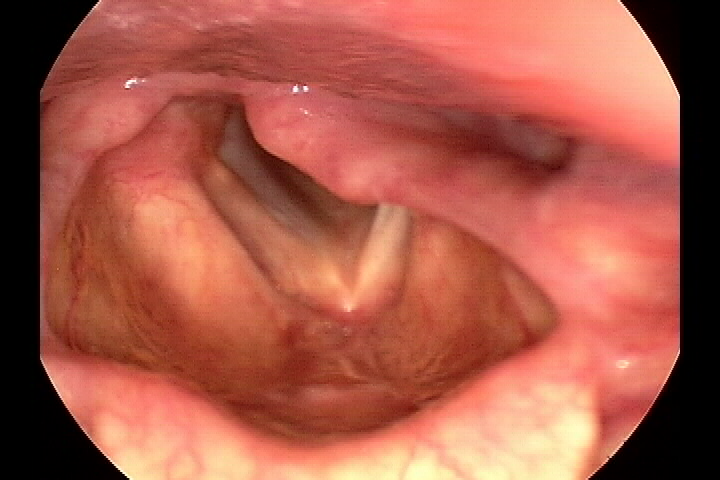Vocal fold paralysis happens when one or both vocal cords lose their ability to move, due to damage to the nerves that control them. This can occur suddenly or gradually and may result from viral infections, surgical complications (such as thyroid or spine surgery), trauma, tumors, or neurological conditions. Sometimes, a growth in the chest, neck, or skull base can press on the nerve, especially the recurrent laryngeal nerve, causing paralysis. If this is suspected, we may order a CT scan of the neck.
When just one vocal fold is paralyzed (unilateral), the voice often sounds hoarse, breathy, or weak, and patients may feel tightness, burning, or fatigue in the throat from the muscles working too hard to compensate. Bilateral paralysis, where both vocal folds are affected, is more rare and can lead to breathing difficulties, noisy breathing (stridor), or even airway blockage in severe cases.
In our office, we use flexible laryngoscopy to view the vocal folds and sometimes additional imaging or EMG to assess nerve function. Some cases recover on their own within months, but others require treatment to improve voice and breathing. We offer in-office vocal fold injection with Restylane to help bring the paralyzed fold closer to the midline, improving voice quality and reducing strain. For long-term issues, surgical options like medialization thyroplasty, fat injection, or reinnervation may be recommended.

Vocal Fold Paralysis

Vocal Fold Paralysis
Vocal fold paresis means one or both vocal cords are weakened but not completely paralyzed. The folds still move, but not with full strength or coordination. This may be caused by viral infections, minor surgical injuries, inflammation, or may occur without a clear cause. When only one side is affected (unilateral), patients may notice a breathy, weak, or unstable voice, vocal fatigue, and sometimes a sensation of tightness or burning in the throat. When both sides are affected (bilateral), which is rare, patients may have a weak or effortful voice and difficulty breathing when active.
Diagnosis involves a laryngoscopic exam and sometimes electromyography (EMG) to assess nerve function. Many cases improve with time and voice therapy alone. In more persistent cases, we offer in-office Restylane vocal fold injections to help the folds close more efficiently. For more significant or long-standing paresis, surgery can help reposition the fold for better vocal closure. Fat injection into the vocal folds can also help with the voice. Recovery depends on the severity of the condition and typically involves follow-up voice therapy to reduce strain and rebuild healthy vocal patterns.

 YouTube Channel
YouTube Channel
